Refinancing is the process of changing or moving your existing home loan, to a new home loan. This is done by either changing lenders, or staying with your existing lender and changing or altering your product.
The new loan will refinance/pay out your existing loan.
WHY DO PEOPLE REFINANCE?
There are various reasons why people refinance their home loans. Some of these might include:
Better Interest Rates – If another lender (or loan type) is offering lower interest rates than your current loan, you have the potential to save a tonne in interest and lower your repayments, possibly enabling you to pay off your home loan sooner.
Lower Fees and Charges – In comparing your fees and charges with other lenders (or products), you may find some big differences. Maybe you pay a loan fee each month where you are, but another loan may have no monthly fee. Over 30 years, small things like this can add up.
Competitive Features – Perhaps you are looking for features you do not have on your existing loan. Things like an offset account or a redraw facility.
Use of Equity – You may be hoping to use the equity you have in your home. Changing loans allows you to borrow more money (perhaps for a renovation, or even to build wealth by purchasing an investment property).
Debt Consolidation – You may be looking to put all your debts together with your home loan. Doing this allows you one easy payment at a lower rate that home loans can offer.
Special Offers – From time to time some lenders will offer a cash bonus or a prize to encourage you to swap your home loan over to them. (Make sure, if you are changing for this reason, that everything else about the loan is what you are after also).
Quality Service – If someone has recommended another financial organisation for their outstanding service, you may wish to consider changing your home loan provider.
End of Fixed Rate Term – Just like when insurance comes for renewal and you shop around, you can do the same with your home loan, particularly when you have been on a fixed rate term that is coming to an end.
Change of Situation – Needs may change over time or financially things may have altered which may prompt you to search for something different to achieve your new goals.
WHAT ARE YOU LOOKING FOR IN A HOME LOAN?
At the time you purchased your home, you may not have had the experience or knowledge to research for the best home loan product for you.
Perhaps your finances and life circumstances have changed a lot since then.
If this is the case, it might be time to see if there is another home loan product out there that will be a better fit for you.
It is important to start by assessing what it is you are wanting and needing from your home loan moving forward.
It may look something like this:
My home loan wish list
- Low and competitive interest rate
- Fixed interest for the next 2, 3 or even 5 years
- Loan term amount no more than 20 years
- Redraw Facility
- No monthly fees
- Friendly Service
Offset Account
An offset account lets you link the loan to a transaction or deposit account. The funds in the offset account reduces the home loan balance on which the interest is charged.
Redraw
A redraw facility allows you to make additional contributions to your mortgage and then “redraw” these extra funds. Many people use a redraw facility to pay for large expenses like renovation costs, school fees or overseas holidays.
UNDERSTAND YOUR CURRENT HOME LOAN
It is likely you know the interest rate on your current home loan, but what else do you really know about it?
Are you aware of any ongoing fees? Do you know all the features available to you? It might be time to take a closer look.
Before you decide to refinance, take the time to explore your existing home loan. You might be surprised to find it already ticks all your ‘home loan wish’ boxes. Perhaps it ticks most of your boxes except one or two.
If your loan is performing well and you are happy with the lender you have now, why not look into what other loan options they have to offer. It could save you the hassle and cost of changing lenders when you have something that is already working well.
RESEARCH THE HOME LOAN MARKET
If you have reviewed your current home loan and/or lender and compared it to your ‘wish list’ and feel it is time to move on, then it is time to do your research.
The internet is an amazing resource allowing us to compare without even moving off the lounge, so grab a cuppa and settle in.
There are many trusted comparison sites available online which allow you to look at various lenders and compare the details.
You will see some information on a company, their different products, interest rates, comparison rates (which is most important), fees and features, all in the one place.
Alternatively, you can look up the websites of places friends may have referred you to, or places you may have seen advertised, and do your own research into what they offer.
If you prefer, you can always make a call to a credit specialist or visit a branch of your lender of choice to discuss the options available to you.
Comparison Rate
The comparison rate includes not only the interest rate, but also the fees and charges payable during the life of the loan, so it is an important factor to take into account, not just the interest rate alone.
Some helpful comparison rate sites
- Canstar – www.canstar.com.au
- Infochoice – www.infochoice.com.au
- Finder – www.finder.com.au
- Mozo – www.mozo.com.au
- Ratecity – www.ratecity.com.au
CALCULATE THE COSTS OF MOVING YOUR HOME LOAN
When refinancing your home loan, there are going to be some costs involved.
Calculate these costs, and compare them to what savings you will be making from refinancing your home loan to decide whether making this change is going to benefit you.
Some possible costs may include:
NEW Lender Fees
- Loan Establishment fees/Start-up fees - This is the fee a lender charges to work on the loan. This amount will be different for each lender.
- Valuation fees - Most lenders will require a valuation to be performed on the property to determine its worth.
- Ongoing Loan Service fees - Check if your new loan will have any ongoing processing fees.
EXISTING Lender Fees
- Exit/Discharge fees - Check with your existing lender if any fees apply for ending your loan with them.
- Break/Deregistration fees - If you have a fixed rate loan you may need to pay a fee for breaking the fixed rate term.
- Switching fees - If refinancing internally with your current lender you may need to pay a fee for changing to a different loan product.
Legal Fees
Settlement fees - This is the cost for all the legal documents to be processed and lodged when changing home loans.
Government Fees
- Mortgage Registration fees - This is the fee charged by the state and territory governments to register property as security on a home loan
- Stamp Duty fees – This is a mandatory tax that the state and territory governments levy on a home buyer whenever they purchase a property.
LOAN REQUIREMENTS
There is some paperwork you will need to put together to take to the lender of your choice when you have made the decision to refinance.
Depending on the lender, you may be required to make a call or go visit a branch, but for some you will be able to do much of the refinancing process online.
Some paperwork to prepare for the refinance is:
Paperwork required in reference to the property
- The existing home loan statements for the property
- A copy of the property’s rates notices land/water (6 months’ worth)
Paperwork required for each Borrower listed on the mortgage and loan
- Two recent payslips
- Your latest tax return
- Bank statements of all your accounts (3-6 months’ worth)
- Statements for any loans, store cards or credit cards you have (3-6 months’ worth)
- Superannuation statements
REFINANCING PROCESS (In 10 easy steps)
What steps do you need to take?
- Armed with your information and paperwork contact your lender of choice.
- Complete a home loan application and submit it for assessment and await pre-approval.
- A valuation will be conducted on your property.
- If your application is successful, you will be contacted and given some paperwork to complete.
- Once all the signed paperwork is complete, it will take roughly 2 – 4 weeks for the process of changing from one loan to the next to be finalised (likely sooner if you are only switching loan types with your current lender.)
- If you have changed lenders, contact your home insurance provider and make sure you update your new lender as the interested party.
- If you have any of your pay or direct debits set up to go to your old mortgage, make sure you arrange to have these cancelled and redirect them to your new loan.
- On settlement day, the title deeds to your home will be transferred over to your new lender and your existing loan will be paid out and closed.
- You will receive details of your new loan and related documentation to keep for future reference.
- Congratulations! That is the process of refinancing complete. Enjoy this new journey.
WE ARE HERE TO HELP
At Australian Mutual Bank, we are ready to help you!
Take a look at our attractive home loan rates and generous features and speak to one of our knowledgeable and friendly team of Credit Specialists.






